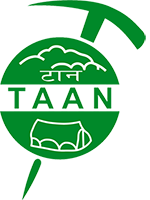
Traditional and Popular Nepali Dishes You Need to Try in 2025

Traditional and Popular Nepali Dishes You Need to Try in 2025
swotah travel
12921
19, 02 2023
The delicious outcome of culture and tradition is food. Culture has a significant impact on cooking techniques, recipes, and even raw vegetable ingredients.
Therefore, it would be accurate to claim that food is the best method to comprehend people, their cultures, lifestyles, and eating patterns.
Eating habits and food preferences vary according to geographic location and cultural differences. Nepalese food and cuisine are incredibly delicious thanks to the blending of different spices and culinary ingredients, making it famous worldwide.
So here's a list of the top 10 most popular and traditional Nepali dishes you need to try:
-
Dal Bhat
-
Dhindo
-
Kodo ko Roti
-
Mo: Mo
-
Kwati
-
Sekuwa
-
Sel Roti
-
Gundruk
-
Samay Baji
-
Aalu Tama
Nepal is a culturally and racially varied country, and local cuisines and eating customs reflect this diversity. If you don't eat the local cuisine when visiting Nepal's various regions, you'll miss out on a lot of it.
Dal Bhat
Ever heard of anyone saying, "Dal Bhat power 24 hours?" This couldn't be more true.
Dal Bhat is a nutritious staple food of Nepal that will keep you energized for the entire day. Usually, it includes steamed rice (bhat) and lentil soup (dal), along with a number of other dishes like vegetables, yogurt, and pickles.

Photo: Dal Bhat
To prepare lentil soup, lentils are boiled until they are mushy and then mashed. A variety of herbs and spices, including ginger, garlic, and turmeric, are added to it. On the other hand, rice is prepared by steaming it.
Typically, people eat dal bhat twice a day, in the morning and in the evening. It is a filling supper with plenty of protein and carbohydrates. It is a well-liked dinner among people from various socioeconomic groups because it is also reasonably priced.
Every Nepalese eats the same combo of dal bhat and tarkari (vegetables) daily and cannot get enough of it.
Dhindo
Dhindo, a thick porridge made from fermented millet flour and water, is a traditional food from Nepal. To make Dhindo, the mixture is cooked over low heat, constantly stirring, until it becomes thick and smooth.

Photo: Dhindo (traditional Nepali food)
Dhindo is a common main course at meals and a staple food in many rural districts of Nepal. It is typically consumed with a vegetable or meat dish, as well as a number of dipping sauces such as achar, pickles, and chilies (Nepalese pickles).
Dhindo not only makes you full but also contains important proteins and carbohydrates. It is typically regarded as a traditional and cozy dish.
Different types of grains, including corn, barley, and buckwheat, can be used to make dhindo. It can also be consumed on its own as a wholesome and satisfying snack.
Kodo ko Roti
Kodo ko Roti is a traditional flatbread from Nepal, made from the flour of a millet grain called "Kodo" in Nepali.
It is a staple crop in Nepal's hilly and mountainous areas, where the challenging terrain and severe environment frequently make it the only grain that can be produced. It is a significant source of protein and carbs for those who live in these areas.
When making the roti dough, Kodo flour, water, and occasionally salt are combined. The roti is fried on a hot griddle or frying pan after being rolled into flat circles. The bread is renowned as being very nutrient-dense and has a unique nutty, slightly bitter texture and flavor.

Photo: kodo ko rati
Kodo ko Roti requires the grain to be ground and processed, which is a time-consuming process. Additionally, the bread is typically made by hand and sporadically shaped into different forms, such as rounds, triangles, and even rectangles.
Despite the lengthy process, Kodo ko Roti is regarded as a traditional and nourishing cuisine that is a crucial component of the daily diet for many people in Nepal's mountainous regions.
Mo: Mo
Mo: Mo is very popular in Nepal and is considered to be a comfort food for many people, which is easily available in restaurants and street food stalls in Nepal.
A thin dough made by combining flour and water is wrapped around seasoned ground beef or vegetable mixture to make Mo:Mo. Then Momo is given many different shapes, although they are often circular or crescent-shaped.

Photo: Mo:Mo (Nepali Dumplings)
The most popular momo filling is a mixture of ground meat, usually chicken, pork, or buffalo meat, and veggies like cabbage, onion, and ginger. Mo:Mo is typically served with a hot, tomato-based dipping sauce after being steam-cooked.
Momos have gained popularity in recent years and are now available in a variety of forms, including fried, tandoori, and even jhol momos, which are momos in spicy gravy.
Kwati
Kwati is a traditional dish from Nepal that is frequently consumed on the occasion of the Janai Purnima festival or Kwati Punhi, which happens in August and celebrates the end of the monsoon season.

Photo: Kwati
It is a soup made from nine varieties of sprouting beans, such as mung bean, soybean, red kidney bean, black lentils, black-eyed peas, fava beans, chickpeas, cowpeas, and green peas. Thus, it is a strong source of protein.
The beans are sown for a few days before being boiled with spices and seasonings, including cumin, ginger, and garlic. The diversity of beans and spices gives the soup its distinct flavor and thick, hearty consistency.
The meal is thought to be very healthy and to have medicinal properties, especially during monsoon season, when it is thought to strengthen the immune system and aid with digestion.
Kwati is often made for other important celebrations, including weddings, new baby celebrations, and other family gatherings. It is typically served as a main meal and goes well with traditional bread like roti.
Sekuwa
Sekuwa is a traditional Nepalese dish made of meat that is marinated in a mixture of spices and then grilled over hot coals or a fire. The meat used in Sekuwa is commonly buff, pork, or chicken.

Photo: Sekuwa (meat roasted in a natural wood fire)
To make Sekuwa, small chunks of meat are sliced up and marinated in a blend of herbs and spices, including cumin, coriander, black pepper, and ginger-garlic paste. The marinated meat is skewered and roasted until it is thoroughly cooked and tender over hot coals.
The meat is perfectly prepared, with a smokey flavor and soft texture, and can usually be found in restaurants and street vendors in Nepal.
It is typically served with a side of chutney or pickle and sometimes with a dip called "Sekuwa masala," which is made by mixing various spices, such as cumin, coriander, and chili powder, with yogurt. Many people enjoy the dish, often at festivals, events, or even as a casual meal.
Sel Roti
Sel Roti is one of the traditional Nepali dishes that is often prepared during special occasions like Tihar, weddings, etc.
Growing up, my mom would make Sel roti for us to eat as well as to take as a gift during various important festivals. It is sweet, crunchy, and chewy and makes a perfect go-to snack with tea.

Photo: Sel Roti
I believe Sel Roti is a great snack to munch on with your family members and friends over the holidays.
To make Selroti, rice flour, sugar, water, and ghee are combined to make a batter. Once the oil is heated, the batter is poured into the circular pan and deep-fried until golden brown.
Traditionally, Sel Roti is regarded as a good luck charm and a symbol of prosperity. And it is also served as a token of love and appreciation to friends, family, and loved ones.
Gundruk
Gundruk is a typical fermented leafy vegetable dish from Nepal. It is a popular food in Nepal, where it is often used to add flavor and nutrition to meals.
Gundruk is typically used as a side dish and is served with steamed rice and dal. It can also be used to make soups and curries, along with other ingredients like tomatoes, onions, and spices.

Photo: Gundruk
To prepare Gundruk, a variety of leafy greens, including mustard leaves, radish leaves, and spinach, are fermented. The leaves decompose and provide a unique, sour aroma over the course of many days of fermentation.
Then the leaves are squeezed and drained to remove any extra water after fermentation. After that, they are either sun-dried or dried in a low-heat oven for a few days. Dried Gundruk can be stored for long periods of time and is used as a condiment and seasoning for various dishes.
The fermentation process of Gundruk increases its nutrient value and also helps in its preservation of it for a long time. It is also low in calories and fat and rich in vitamins A and C, iron, and fiber.
Also Read: 10 Sherpa Foods to Try During The Everest Base Camp Trek
Samay Baji
The most well-known traditional Newari food, Samay Baji, is rich in cultural importance. When performing Newari rituals and festivals, it is presented as a prasad.
Samay Baji is frequently offered as the starter or as the first course of a meal after the Pooja is concluded. According to the Newars, this cuisine denotes fortune, happiness, health, and long life.

Photo: Samay Baji
Traditional Newari food, known as Samay Baji has been passed down through the generations. It often consists of a great variety of meals on a single platter, most of which are made of "Tapari" leaves.
This hearty food platter consists of main items such as the chiura (beaten rice), black soybeans (bhatmas), wa:, chatamari, chhwela, finely cut ginger (palu), fried boiled egg, boiled beans, spinach, and ayla (alcohol).
Aalu Tama
Potatoes, fermented bamboo shoots, and black-eyed beans are the main ingredients in this sour, fiery, and spicy soup, Aalu Tama. Bamboo shoots that have been fermented give the soup an odd sourness.
Aalu Tama is one of the most well-liked Newa foods and is consumed in Newar communities all year round. However, people outside of the Newar community have also started to prepare and enjoy this delicious Aalu Tama dish.
It is typically consumed with beaten rice, wa:, rice, or Samay baji as a side dish. Aalu Tama is a popular name in Nepal, although it is referred to as chhon-kwa in Newar community. Bamboo shoots are referred to as cho, and heated soups or stews are referred to as kwa.
NEWSLETTER SIGNUP
Sign up to receive our trip ideas and travel offers!
Get updates and Exclusive Offers up to 20% Discount








